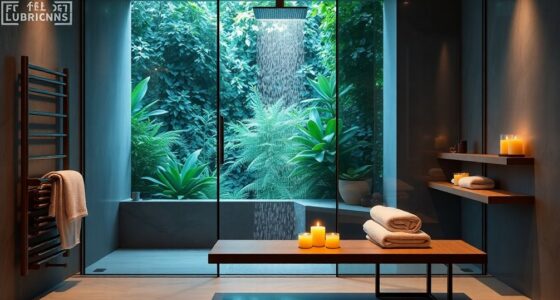You might wonder why concrete houses are rare in the U.S. It often comes down to preference. Most people choose wood for its warmth, aesthetic appeal, and lower costs. Historical practices favor wood due to its abundance and the speed of construction. Additionally, rising concrete prices and a shortage of skilled labor make concrete less feasible for builders. While concrete offers durability and low maintenance, its unfamiliarity deters many. As consumer demand shifts toward sustainability, the landscape might change. But there's more to this story than meets the eye—keep exploring to uncover the surprising developments ahead.
Key Takeaways
- Wood framing remains popular due to its warmth, aesthetic appeal, and lower cost compared to concrete homes.
- Rising construction prices and labor shortages hinder the viability of concrete homes, limiting skilled workers for installation.
- Traditional building practices and cultural preferences favor wood over concrete, which is often viewed as unfamiliar.
- Supply chain disruptions and increased shipping costs create material shortages for concrete, complicating its adoption in residential construction.
- Despite its durability and sustainability benefits, concrete's acceptance is slowed by established preferences for traditional materials like wood.
Cultural Preferences for Wood Homes
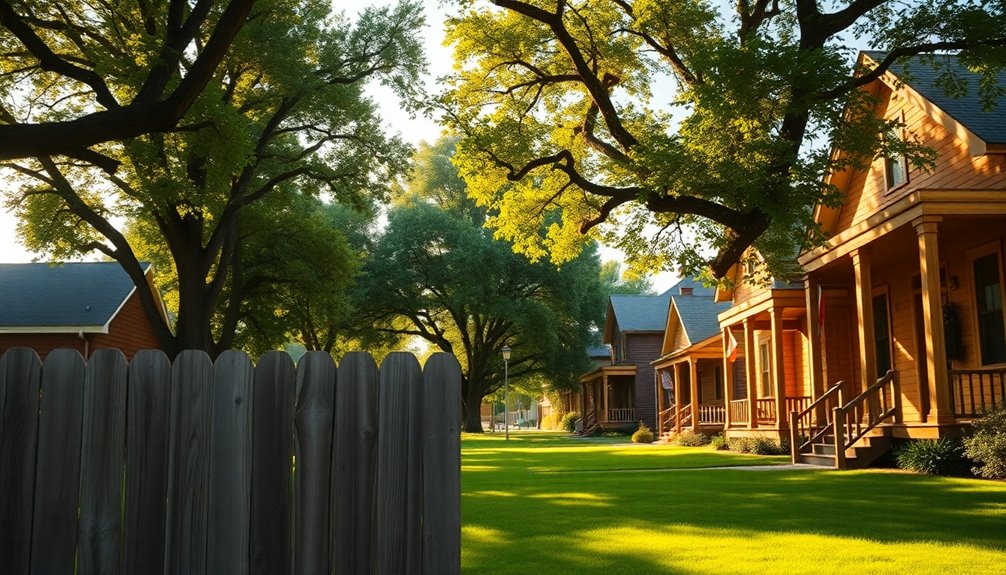
When you consider the cultural landscape of American housing, it's clear that wood homes dominate the scene. Every year, about 90% of new single-family homes are built using wood framing, reflecting a strong tradition and familiarity with this material.
You'll find that timber's warmth and aesthetic appeal make it a favorite over concrete, influencing consumer choices across every type of home. Additionally, many people appreciate wood's lower cost compared to concrete, making it an economically attractive option for homebuyers.
Environmental considerations also play a role, as many view responsibly sourced wood as a more sustainable choice. This blend of tradition, affordability, and aesthetics solidifies wood's place in American housing culture, shaping how homes are built and perceived. Furthermore, the mental and emotional benefits of decluttering spaces can enhance the overall living experience in wood homes, promoting a sense of calm and organization.
Economic Factors Impacting Construction
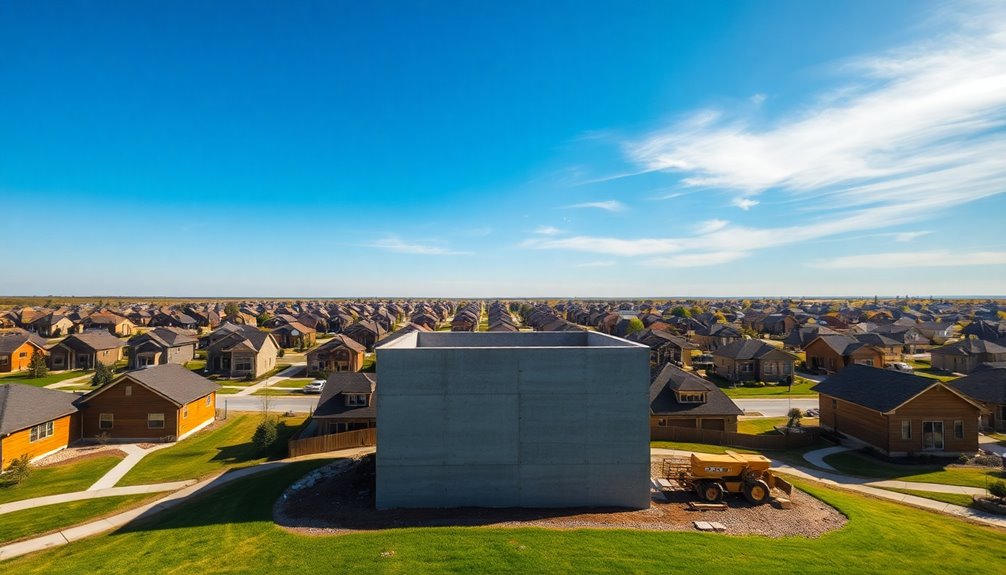
Although concrete homes offer durability and resilience, economic factors heavily influence their adoption in the U.S. housing market. The higher initial costs and labor shortages make concrete less appealing than traditional wood-frame construction.
| Economic Factor | Impact on Concrete Homes |
|---|---|
| Rising construction prices | Makes concrete homes less viable |
| Labor shortages | Limits skilled workers for concrete |
| Supply chain disruptions | Increases material costs |
| Long-term durability | Often overlooked for short-term costs |
Despite the U.S. cement industry projected to exceed $458 billion by 2028, these economic preferences still dominate. As infrastructure investments rise and demand for construction materials increases, we may see a gradual shift towards concrete homes in the future.
Historical Building Practices
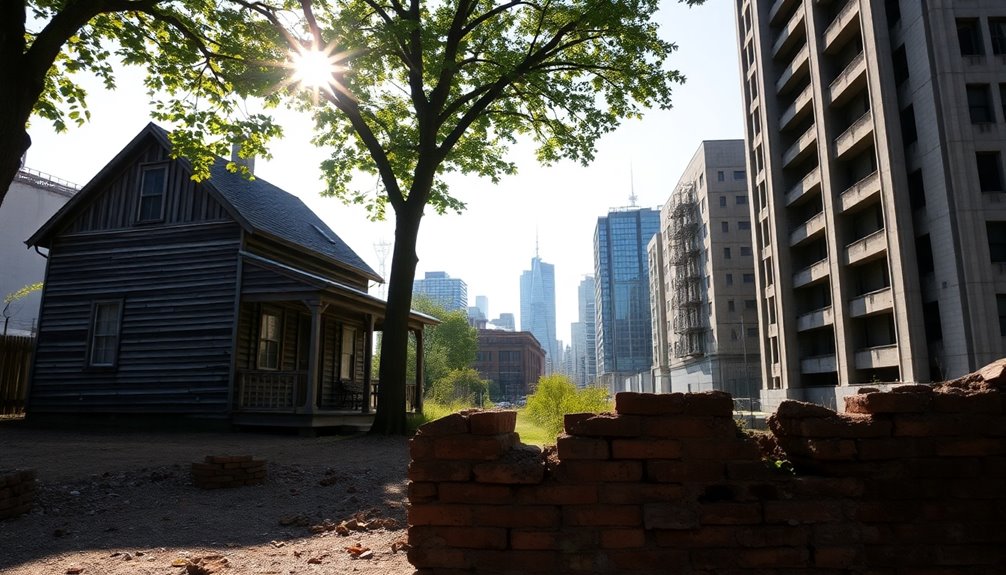
Historical building practices in the U. S. have largely favored wood-frame construction due to its accessibility and speed. Since colonial times, the abundance of timber made wood the go-to choice for early American builders. Moreover, wood-frame construction allowed for flexibility in design and ease of modifications, making it an attractive option for homeowners. This trend persisted into later decades, with many homes built in the 1970s reflecting this approach, characterized by open floor plans and a focus on maximizing natural light. As building materials and methods evolved, the advantages of wood continued to resonate with both builders and buyers, solidifying its place in American residential architecture.
It's cost-effective and quick to construct, which naturally appealed to homeowners and builders alike. While concrete is durable, it requires specialized skills and equipment that many average builders didn't possess. Consequently, concrete's usage in residential settings has mostly been limited to foundations and basements.
Additionally, the cultural preference for traditional aesthetics and the versatility of wood framing have solidified wood's dominance in American architecture. This historical context sets the stage for understanding why concrete hasn't taken a more prominent role in residential construction.
Challenges in Concrete Adoption
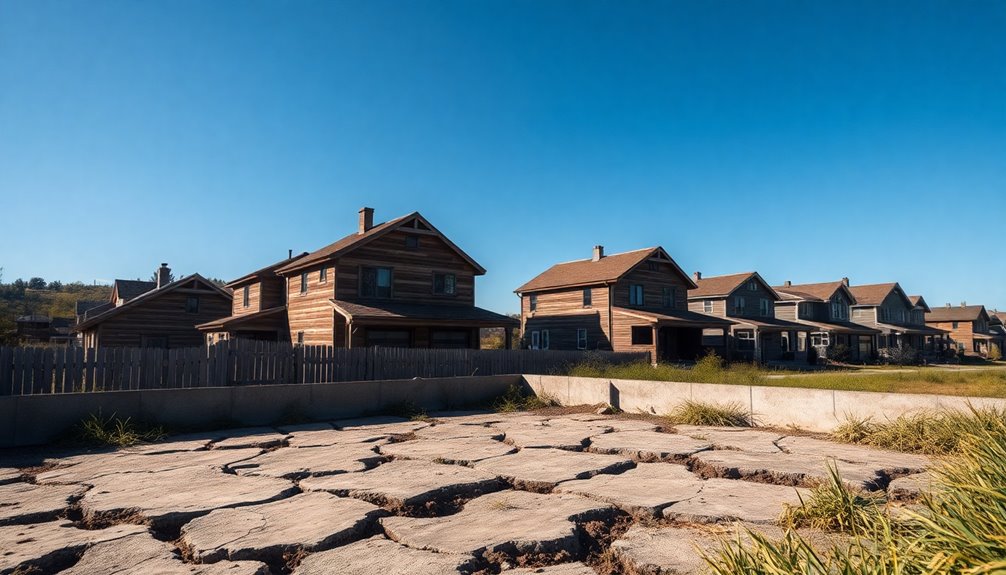
The longstanding preference for wood-frame construction in the U.S. has created significant hurdles for concrete adoption in residential building.
You'll find that the cement industry faces supply chain challenges, including labor shortages and rising shipping costs. These issues have resulted in shortages of cement and concrete, leading to bidding wars and inflated prices that make concrete homes less appealing for builders and consumers.
The COVID-19 pandemic has worsened labor issues, shrinking the workforce and limiting skilled tradespeople essential for concrete construction.
While concrete offers durability and sustainability, a lack of familiarity and established practices slows its acceptance compared to traditional materials.
Overcoming these challenges could pave the way for a more significant shift toward concrete housing in the future.
Future of Concrete Housing

As consumers increasingly prioritize durability and sustainability in homebuilding, the future of concrete housing looks promising.
While concrete homes currently make up a small part of the U.S. market, their durability and low maintenance appeal to modern buyers. Initially, they may cost more to build, but you'll save on energy bills and insurance in the long run.
Advances in concrete technology, like 3D printing and innovative mixes, are making these homes more affordable and visually appealing.
With the U.S. cement market projected to exceed $458 billion by 2028, increased infrastructure investments could boost demand.
As sustainability takes center stage, concrete's recyclability and energy efficiency might finally position it as a preferred choice for residential construction.
Frequently Asked Questions
Why Does America Not Build Concrete Houses?
You might wonder why America doesn't build concrete houses. The main reasons are cost and tradition.
Wood framing's cheaper and quicker to construct, making it a popular choice. Additionally, cultural preferences lean towards traditional materials.
Concrete construction can also face challenges like supply chain issues and labor shortages. While concrete offers durability, builders often prioritize insulation and energy efficiency, leading them to favor wood for residential projects in many regions.
Are There Any Concrete Houses in the USA?
Yes, there are concrete houses in the USA, especially in areas prone to natural disasters.
You'll find them in states like Florida and Texas, where builders use innovative techniques like Insulated Concrete Forms (ICF) for better insulation and hurricane resistance.
While they're not as common as wood-framed homes, interest in concrete construction is rising due to its durability and energy efficiency, especially after extreme weather events.
Why Don't They Build Concrete Houses in Tornado Areas?
You might wonder why concrete houses aren't popping up in tornado-prone areas. The truth's a bit surprising.
While concrete is durable, it can't flex like wood when fierce winds hit. Builders often choose lightweight materials that can withstand the storm's pressure.
Plus, the cost of concrete construction makes it less appealing. Local codes favor quick repairs, and wood-frame houses are simply faster and cheaper to build.
Wouldn't you want practical solutions in a storm zone?
Why Are Houses in the US Made of Wood Instead of Concrete?
You'll find that houses in the U.S. are primarily made of wood due to several factors.
Wood is cost-effective and readily available, making it an appealing choice for builders. Building codes often favor wood, simplifying the approval process.
Culturally, many people perceive wood as warmer and more inviting than concrete. While concrete offers durability, its higher costs and the need for specialized construction techniques make it less popular among homeowners.
Conclusion
In the end, you can see why concrete houses haven't taken over the U.S. landscape. Deep-rooted cultural preferences for cozy wood homes, economic factors, and historical practices all play a role. Plus, the challenges of adopting concrete in residential construction can feel like climbing Everest! However, as sustainability becomes a priority, the future might just surprise you with a concrete renaissance. Who knows, maybe one day you'll be living in the most stylish concrete palace on the block!




